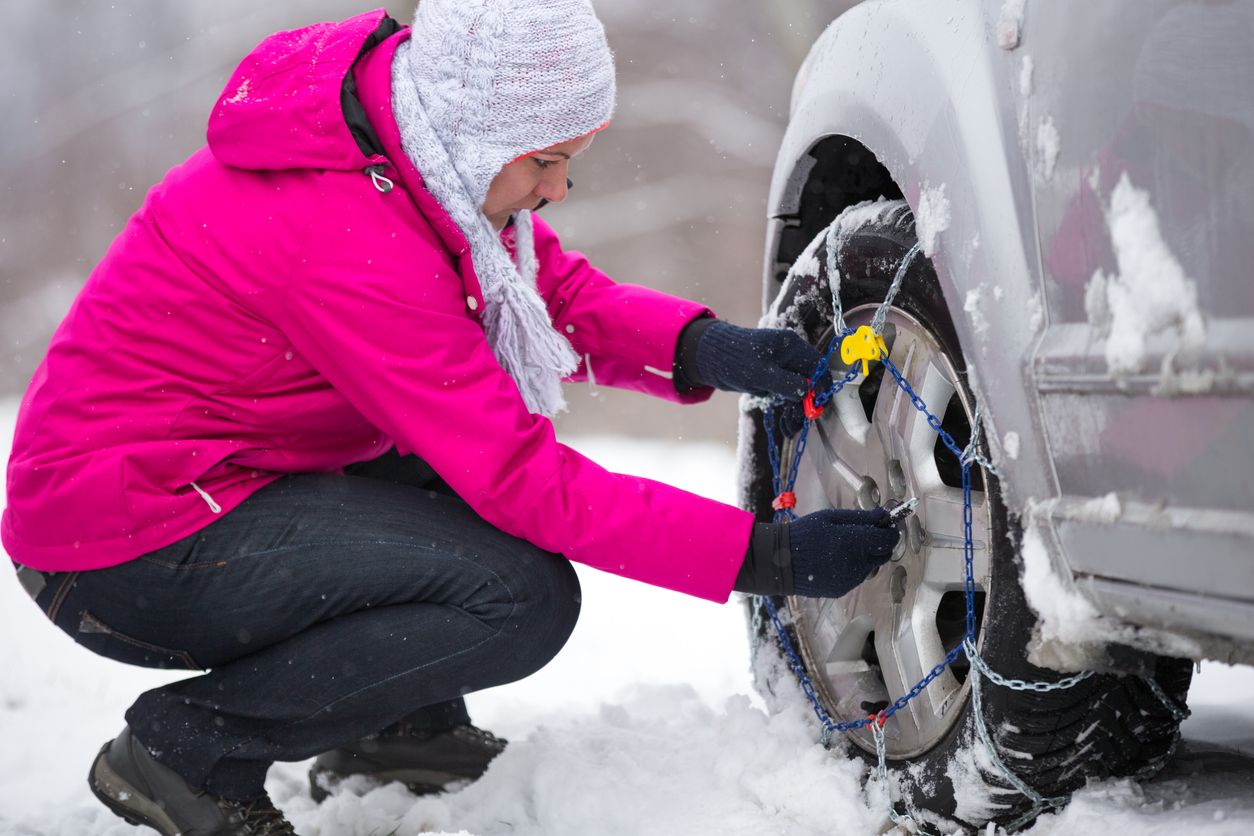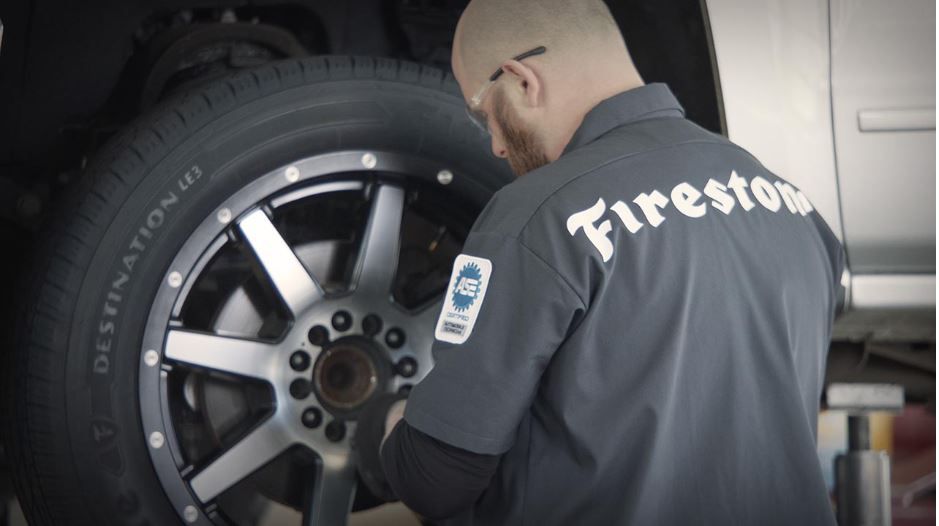You may not think about the health of your tires until something goes wrong. But tire care is important to both your safety and the longevity of your tires! Along with routine tire rotations, balancing, and other repair services, checking that your tires are correctly inflated is a habit every driver should have. Keep reading to learn the importance of proper tire inflation, where to find recommended tire pressure, why your TPMS light may be blinking, and more.
Why Correct Tire Pressure Matters
Keeping the correct air pressure in your tires can do wonders for your vehicle while also helping to ensure safety. Proper tire inflation can ensure even weight distribution, help your tires last longer, reduce rolling resistance, and promote fuel efficiency.
In general, tires lose or gain 1 PSI for every 10℉ change in temperature. That’s why it’s recommended that you check air pressure every other time you stop to fill up your gas tank. Keep in mind that many vehicles have different tire pressures on the front and rear axle. And don’t forget to check the pressure in your spare tire.
What Does PSI Mean on a Tire?
Tire pressure and PSI (pounds per square inch) are closely related but refer to slightly different concepts. Tire pressure generally refers to the amount of air inside the tire, which creates internal pressure that supports the weight of the vehicle. PSI — or pounds per square inch — is a specific unit of measurement used to quantify tire pressure. In short, tire pressure refers to the actual amount of air in the tire, while PSI is the unit of measurement used to express that pressure.
The recommended PSI for tires can vary depending on the vehicle, tire size, and load requirements. It is essential to regularly check and maintain the correct PSI level to maximize tire lifespan and maintain a safe driving experience.
How Do I Know What My Tire Pressure Should Be?
If you want to learn how to tell how much PSI a tire needs, look for your vehicle’s recommended tire pressure in your owner’s manual. Correct tire pressure should also be listed on a sticker placed either on the vehicle's door jamb, doorpost, glove box door, or fuel door.
Want a quicker way to find which tire pressure to use? Use our PSI tire pressure chart to find the recommended tire pressure for your vehicle in minutes.
How to Check Tire Pressure
You will need a tire pressure gauge and air compressor to check and adjust your tires' PSI. These can often be found outside of gas stations and auto service centers and are typically available free of charge or for a minimal fee. Additionally, you can use a digital or analog tire pressure gauge. Digital gauges are generally easier to read.
Once you've located a tire pressure gauge, follow these steps:
- Check tire pressure when your tires are 'cold': The friction and heat caused by driving can affect tire pressure. We recommend checking your tire pressure before or at least three hours after driving.
- Remove the valve cap: Unscrew the valve cap on the tire's valve stem. Keep the cap in a safe place.
- Attach the tire pressure gauge: Press the gauge firmly onto the valve stem to get an accurate reading. You may hear a hissing sound, which is normal.
- Read the tire pressure: Compare the gauge's tire pressure reading to the recommended PSI for your vehicle. If the pressure is too high or too low, it will need to be adjusted.
- Adjust tire pressure if needed: If the tire pressure is too low, use an air compressor to add air until it reaches the recommended PSI. If the pressure is too high, release air by gently pressing the valve stem with the gauge until the PSI reads at the correct level.
- Repeat for all tires: Repeat the process for all four tires, including the spare if applicable.
- Reinstall the valve caps: Once you've checked and adjusted each tire, twist the valve caps back on securely.
- Perform TPMS reset (if applicable): Some vehicles will require you to manually reset the TPMS system by pressing and holding the TPMS button if the low pressure light was on. Most vehicles will automatically turn the TPMS light off after a short drive.
Why Is My Tire Pressure Light Blinking?
In 2005, Congress mandated that all vehicles manufactured after September 2007 come equipped with a tire pressure monitoring system (TPMS). A TPMS informs drivers whenever their tire pressure drops below manufacturer-recommended levels for driving.
With the TPMS, one of these symbols will light up on the dashboard when any tire is 25% under-inflated. If the TPMS symbol blinks multiple times when your car starts, there may be an issue with the TPMS system. If the TPMS light remains solid with no blinking, this usually indicates low tire pressure.
Visit Your Local Firestone Complete Auto Care For Expert Tire Service
Since 1926, Firestone Complete Auto Care has offered drivers professional tire repair to help them get back on the road sooner and safer. When tire damage strikes, leave it to the expert technicians at your local Firestone Complete Auto Care to fix things right the first time. Should you need new tires, we carry some of the world’s best tire brands across our locations nationwide, including Bridgestone Driveguard tires.
With Driveguard tires equipped on your ride, you get the added benefit of run-flat technology. Should you ever get a flat or puncture, these durable options can allow you to drive up to 50 miles at speeds of up to 50 mph*. Drive with peace of mind by stopping at your nearest Firestone Complete Auto Care for a tire upgrade and installation of Bridgestone Driveguard tires.



